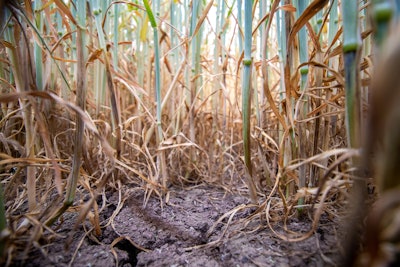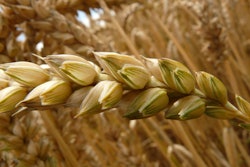
Prolonged droughtin Kansas is stunting wheat crops and turning the plants a blueish hue.
According toreports,crop scouts analyzed yield prospectsin Oklahoma, Nebraska and Kansas, the biggest U.S. grower. What they found underscores why the government is predicting that farmers across the nationwill likely abandon their wheat cropsat the highest rates since 1917.
The drought in the Plains is shrinking the U.S. wheat harvest, limiting the expansion of world supplies and delaying further relief from the worst food inflation in decades.
It also allows Russia, the biggest wheat shipper, to further tighten its hold on the global grain trade, while the U.S. loses relevance in the market, with domestic buyers purchasing European imports, saidreports.
Abandoned fields and low yields underscore Wheat Tour 2023
The 2023Wheat Quality Council’s Hard Winter Wheat Tour across Kansas wrapped up on May 18. During the three days of wheat scouting, tour participants traveled six routes from Manhattan to Colby to Wichita and back to Manhattan. This year’s tour hosted 106 people from 22 U.S. states plus Mexico, Canada and Colombia.
The three-day average calculated yield for the fields that will be harvested was 30 bushels/acre.
While an estimated 8.1 million acres of wheat were planted in the fall, the Kansas wheat crop, suffering from a multi-year drought, has robbed the state’s yield potential and resulted in many abandoned fields.
官方旅游总产量的投影of wheat to be harvested in Kansas is 178 million bushels, indicating that tour participants thought abandonment might be quite a bit higher than normal at 26.75%.
USDA: Drought-affected U.S. wheat supply at 16-year low
Last week, USDA released its latestWorld Agricultural Supply and Demand Estimates(WASDE) report.
In it, the agency said the2023/24 outlook for U.S. wheatis for reduced supplies and exports, increased domestic use, and smaller stocks compared with 2022/23.
U.S. wheat supplies are forecast lower than last year with smaller beginning stocks and only slightly larger production. All wheat production is projected at 1,659 million bushels, up modestly from last year on increased harvested area.
The harvest-to-plant ratio is down from last year, with above-average abandonment in Texas, Oklahoma and Kansas, said USDA.





















